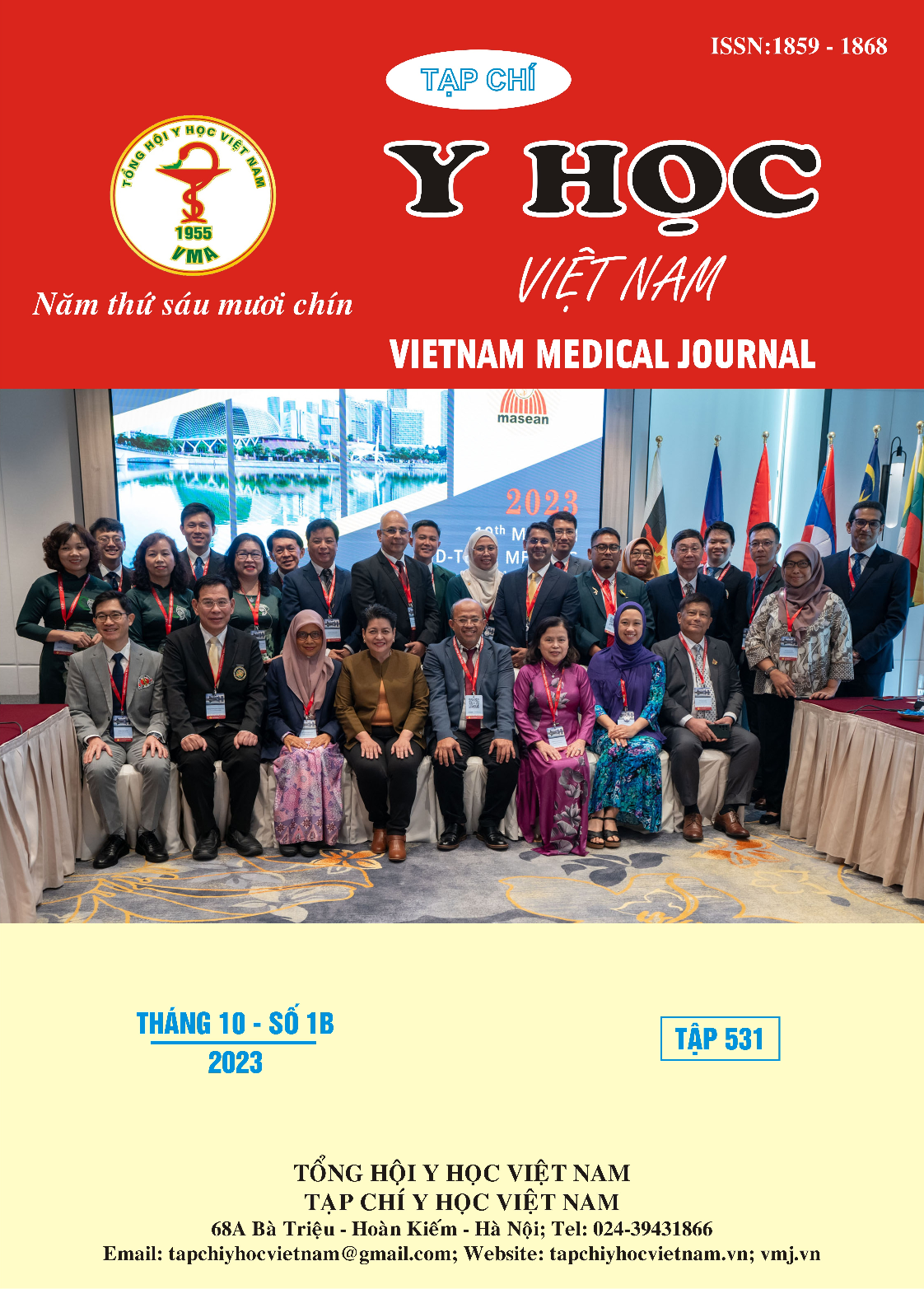EVALUATION OF EFFECTS OF C-ARM GUIDED CELIAC PLEXUS NEUROLYSIS TECHNIQUE BY THE TRANSINTERVERTEBRAL DISC APPROACH ON THE MANAGEMENT OF ABDOMINAL CANCER PAIN
Main Article Content
Abstract
Introduction: Pain is the most common symptom in advanced stage cancer patients. Drug therapy controls cancer pain in 70 – 90% of patients. Neurolysis has been claimed to be the best treatment. C-Arm guide celiac plexus neurolysis technique by the transintervertebral disc approach is often used because it is the easiest approach, and the loss of resistance technique can accurately position the puncture needle. Patients and methods: Fifty patients with abdominal cancer pain undergo neurolysis with absolute alcohol by the D12 – L1 and L1 -L2 transintervertebral disc approach. The needle penetrates the intervertebal disc and the needle tip is placed in the postaortic retrocrural space. All patients were monitored for changes in VAS score, quality of life, complications effects before and after intervention. Results: C-Arm guide celiac plexus neurolysis technique by the transintervertebral disc approach is simple, safe and less invasive. VAS scores decreased significantly at all time points after the intervention and lasted for up to 3 months. The quality of life improved significantly after intervention, peaking at 1 month after discharge from the hospital and gradually decreasing due to the severity of the cancer disease.
Article Details
Keywords
Pain interventional therapy; celiac plexus; Neurolysis; Quality of life
References
2. Ventafridda V, Tamburini M, Caraceni A, Deconno F, Naldi FA. A validation study of the WHO method for cancer pain relief. Cancer 1987;59:851 – 6.
3. Thompson GE, Moore DC, Bridenbaugh LD, Artin RY. Abdominal pain and alcohol celiac plexus nerve block. Anesth Analg 1977;56:1–5.
4. Moore DC. Celiac (splanchnic) plexus block with alcohol for cancer pain of upper intraabdominal viscera. In: Bonica JJ, Ventafridda V, editors. Advances in pain research and therapy. New York: Raven Press; 1979. p. 357–71.
5. Makoto yamamuro. Celiac plexus block in cancer pain management . Tohoku J. Exp. Med, 2000, 192, p.1-18.
6. Alter CL. Palliative and supportive care of patients with pancreatic cancer. Semin Oncol 1996;23:229–40.
7. De Leon-Casasola OA, Kent E, Lema MJ. Neurolytic superior hypogastric plexus block for chronic pelvic pain associated with cancer. Pain 1993; 54:145 – 51.
8. Yabuki S, Ogawa S, Kanayama T, Nakagawa H. Relationship between the effect of celiac plexus block and the amount and concentration of alcohol. Masui; 1988, 31, p1077-1080. for abdominal cancer pain.
9. Wong GY, Schroeder DR, Carns PE, Wilson JL, Martin DP, Kinney MO, et al. Effect of neurolytic celiac plexus block on pain relief, quality of life, and survival in patients with unresectable pancreatic cancer: a randomized controlled trial. JAMA. 2004;291(9):1092–9.
10. Erdek MA, Halpert DE, Gonzalez Fernandez M, Cohen SP. Assessment of celiac plexus block and neurolysis outcomes and tech- nique in the management of refractory visceral cancer pain. Pain Med. 2010;11(1):92–100.


